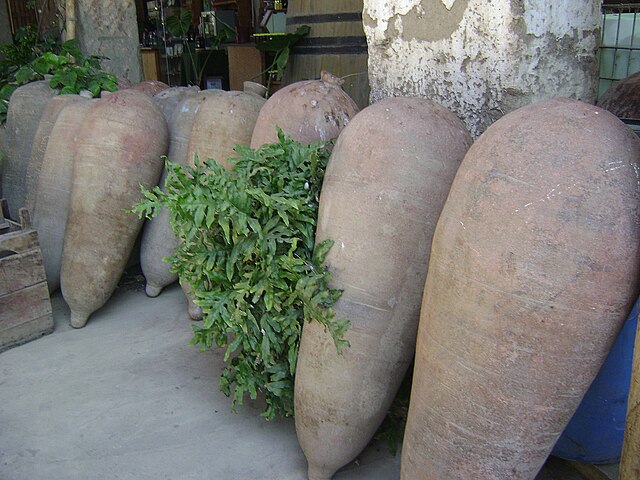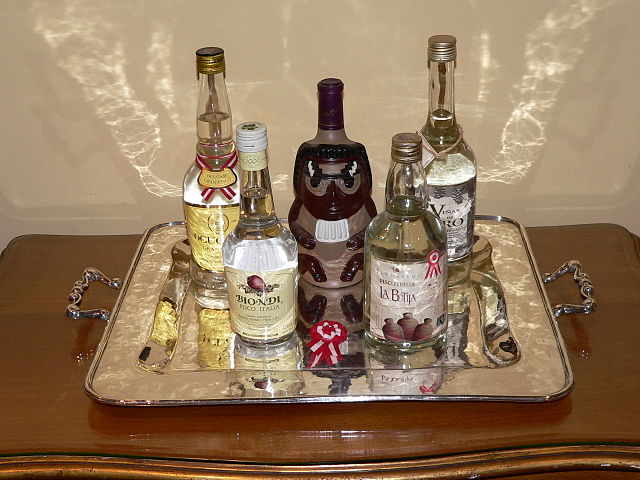A pisco sour is an alcoholic cocktail of Peruvian origin that is traditional to Peruvian cuisine and Chilean cuisine. The drink's name comes from pisco, which is its base liquor, and the cocktail term sour, about sour citrus juice and sweetener components. The Peruvian pisco sour uses Peruvian pisco as the base liquor and adds freshly squeezed lime juice, simple syrup, ice, egg white, and Angostura bitters. The Chilean version is similar, but uses Chilean pisco and Pica lime, and excludes the bitters and egg white. Other variants of the cocktail include those created with fruits like pineapple or plants such as coca leaves.
Peruvian pisco sour
The Plaza de toros de Acho (Lima), the oldest bullring in the Americas, where the predecessor to the pisco sour was sold
Victor Morris, inventor of the pisco sour
Advertisement for Morris' Bar and Register
Pisco is a colorless or yellowish-to-amber colored spirit produced in winemaking regions of Peru and Chile. Made by distilling fermented grape juice into a high-proof spirit, it was developed by 16th-century Spanish settlers as an alternative to orujo, a pomace brandy that was being imported from Spain. It had the advantages of being produced from abundant domestically grown fruit and reducing the volume of alcoholic beverages transported to remote locations.
Colonial era amphorae called pisko in Cañete Valley, Peru
Zones of pisco production as established by Peruvian and Chilean law in red; the Department of Tarija, Bolivia, where most singani is produced in green
"The town of Ica, land of much wine, the best of the kingdom", painting of 1615 by the Inca painter Guamán Poma in his work "Nueva corónica y buen gobierno". Royal Library, Denmark.
Bottles of Peruvian pisco








